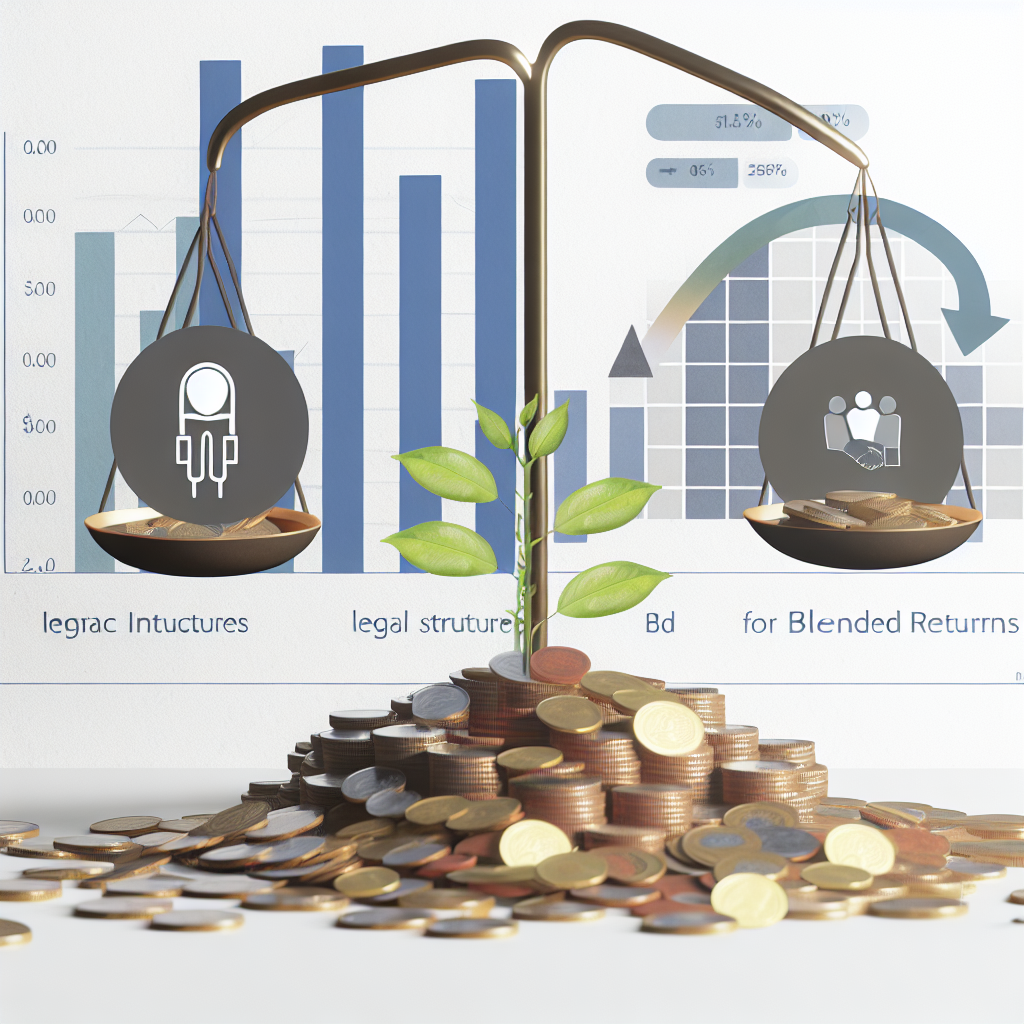
Impact Investing: Legal Structures for Blended Returns
Introduction
Impact investing is an innovative approach that merges financial returns with positive social and environmental outcomes. As more investors seek to balance profit with purpose, understanding the legal structures that facilitate blended returns becomes crucial. This article delves into impact investing’s legal frameworks and their significance, especially relevant in jurisdictions such as the U.S., U.K., and UAE. At The Consultant Global, we pride ourselves on our expertise in navigating the complexities of global markets, providing clients with tailored advice to optimize their investment strategies.
Understanding Impact Investing
Impact investing refers to investments made with the intention to generate not only financial returns but also measurable social impact. This growing trend in the investment community calls for an understanding of legal structures that can support such dual objectives.
Defining Blended Returns
Blended returns encompass a balance between financial gain and social/environmental impact. Unlike traditional investments focused solely on profit maximization, impact investments prioritize sustainability and responsible practices. By understanding the legal frameworks, investors can align their impact goals with their financial expectations.
Legal Structures for Impact Investments
Different legal structures can support impact investments, offering varying benefits and requirements. Here we explore the most relevant structures:
1. Benefit Corporations
Benefit corporations are a progressive legal structure that allows businesses to pursue both profit and social good. Unlike traditional corporations, benefit corporations consider the impact of their decisions on various stakeholders, including employees, communities, and the environment. This structure is increasingly popular among impact investors as it legally protects the company’s social mission.
2. Social Purpose Corporations (SPCs)
Similar to benefit corporations, SPCs commit to advancing social causes. This hybrid structure enables businesses to blend profit motives with social objectives, ensuring that their missions are embedded in their operational framework. SPCs appeal to investors looking to support socially responsible businesses while still achieving financial returns.
3. Limited Liability Companies (LLCs)
LLCs offer flexibility for investors seeking both financial returns and social impact. By forming an LLC, investors can structure their agreements and operations to align with their social objectives. This structure allows for diverse investment strategies while providing limited liability protection.
4. Trusts and Foundations
Trusts and foundations have historically been used to manage philanthropic assets and can be utilized for impact investing. By creating a trust, investors can ensure their philanthropic goals are met while generating returns through strategic investments. Foundations often invest in projects that align with their missions, facilitating both financial and social returns.
Legal Considerations in Impact Investing
While the structures of impact investing provide a framework for blending returns, several legal considerations must be taken into account:
1. Compliance and Regulations
Compliance with local and international regulations is crucial for impact investors. Various jurisdictions have different legal requirements that must be adhered to, particularly when it comes to fundraising, investment types, and reporting standards. Staying informed about these obligations is essential for mitigating legal risks.
2. Disclosure and Reporting
Impact investors need to be transparent about their investment strategies and the expected social outcomes. Legal frameworks may mandate specific reporting practices to ensure accountability and maintain investor confidence. Establishing clear metrics for success can also enhance credibility with stakeholders.
3. Intellectual Property Rights
When embarking on impact investments, it’s vital to safeguard intellectual property rights, particularly when innovations are involved. Ensuring proper legal protections can prevent potential disputes and enhance the marketability of socially focused products or services.
Case Studies in Impact Investing
To illustrate the practical applications of these legal structures, we can look at various case studies that showcase successful impact investments within different jurisdictions.
1. U.S.-based Social Enterprises
In the U.S., social enterprises operating as benefit corporations have demonstrated significant growth and impact. These companies combine social missions with profit-driven strategies, attracting investors who prioritize ethical considerations alongside financial performance. Their ability to demonstrate measurable social outcomes has led to increased funding opportunities.
2. U.K. Community Investments
The U.K. has also seen a rise in community investment initiatives that leverage various legal structures to support social enterprises. By creating frameworks that facilitate investments in underserved communities, these initiatives underscore the potential for blended returns while fostering social development.
3. Impact Investing in the UAE
The UAE has emerged as a global hub for impact investing, with various initiatives aimed at addressing social issues. Frameworks established in the UAE cater to investors seeking to generate positive outcomes while aligning with the nation’s sustainable development goals. The unique multi-cultural environment in the UAE allows for diverse perspectives in addressing social challenges and unlocking investment potential.
The Role of The Consultant Global in Impact Investing
At The Consultant Global, we leverage our extensive experience in international, government, and private sectors to guide clients through the complexities of impact investing. Our unique position in the GCC, particularly in the UAE, allows us to offer insightful advice tailored to the region’s distinctive market dynamics.
We understand the intricacies of achieving blended returns, and our multilingual capabilities ensure that we can engage with diverse stakeholders across cultures. Our commitment to excellence and accountability reflects our embedded values and purpose to serve as trusted advisors to our clients.
Conclusion
As the demand for impact investing continues to rise, understanding the legal structures that facilitate blended returns is essential for investors. By leveraging suitable frameworks, maintaining compliance, and ensuring proper reporting, investors can successfully navigate this evolving landscape. At The Consultant Global, we are dedicated to providing the insights and guidance necessary for impactful investment strategies, ensuring our clients achieve their financial and social objectives.
Embark on your impact investing journey with confidence, knowing you have a trusted partner in The Consultant Global to navigate the complexities and maximize your impact.




Leave a Reply